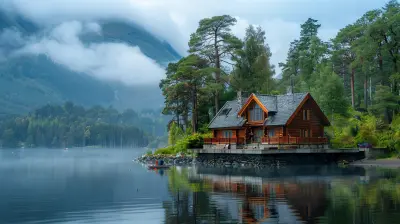The Ancient Lava Fields of Hawaii Volcanoes National Park
24 May 2025
Hawai'i Volcanoes National Park is an otherworldly destination where history, geology, and raw, untamed nature collide. This mesmerizing landscape is shaped by powerful volcanic forces that have been at work for millions of years, leaving behind vast lava fields that stretch as far as the eye can see. But these ancient lava fields aren’t just hardened rock—they tell stories of eruptions, destruction, renewal, and the ever-changing face of the Hawaiian Islands.
If you’ve ever wondered what it’s like to walk on a surface that was once molten rock, or if you’re fascinated by the immense power of nature, then these lava fields should be at the top of your bucket list. Let’s take a deep dive into the history, geography, and sheer wonder of the ancient lava fields of Hawai'i Volcanoes National Park.
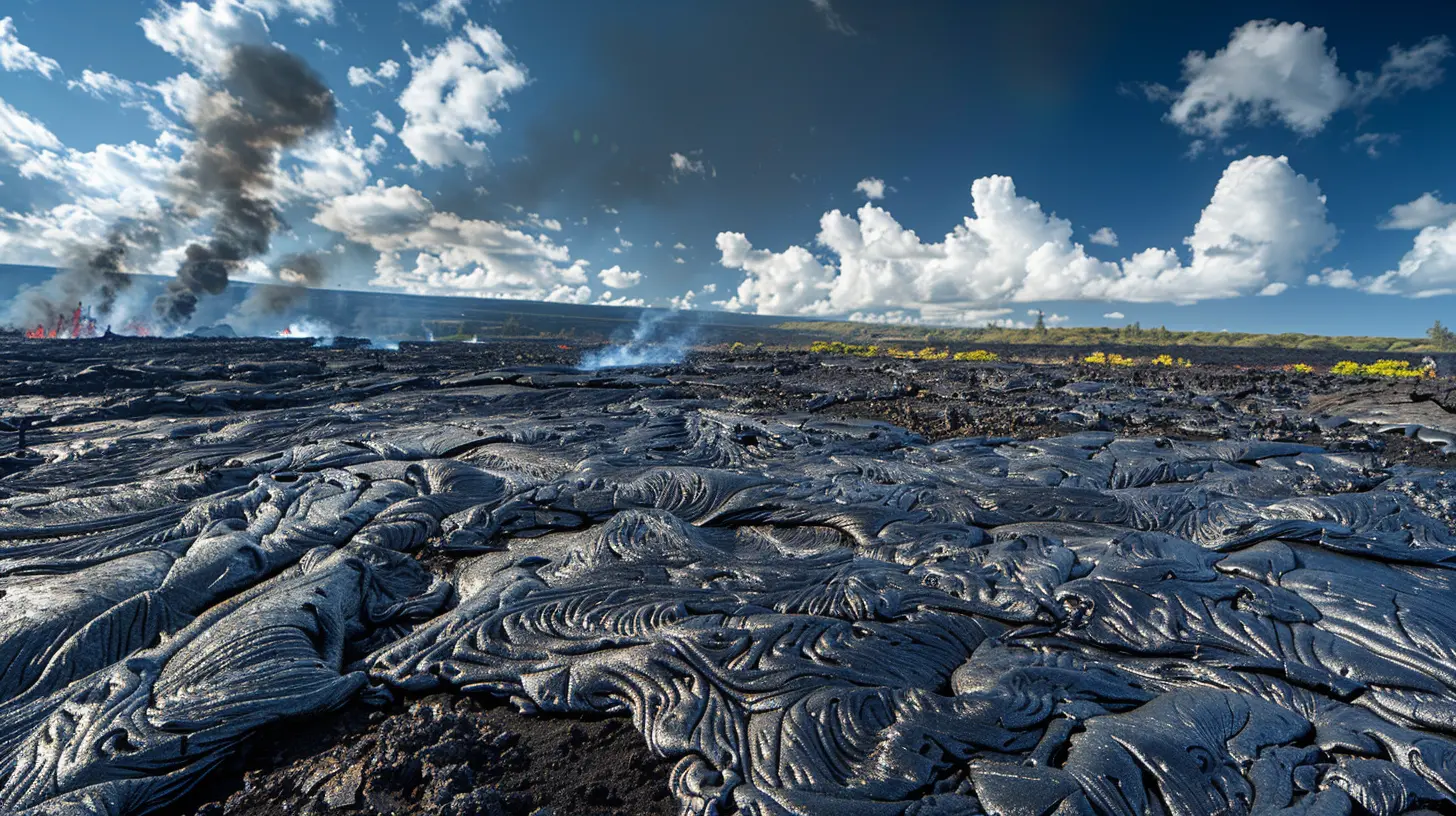
The Creation of Hawaii’s Lava Fields
Lava fields don’t just appear overnight (well, sometimes they do, but we’ll get to that later). Instead, they are the result of millions of years of volcanic activity. The Hawaiian Islands themselves were born from volcanic eruptions, with magma from deep within the Earth pushing its way to the surface, solidifying, and slowly building up landmass over time.Hawai'i Volcanoes National Park is home to two of the world’s most famous volcanoes:
- Mauna Loa – The largest volcano on Earth by volume, towering over the Big Island.
- Kīlauea – One of the most active volcanoes on the planet, continuously erupting for decades until recently.
These two giants are responsible for most of the lava fields you’ll find in the park today. Some fields date back thousands of years, while others are recent flows from eruptions in the last few decades.
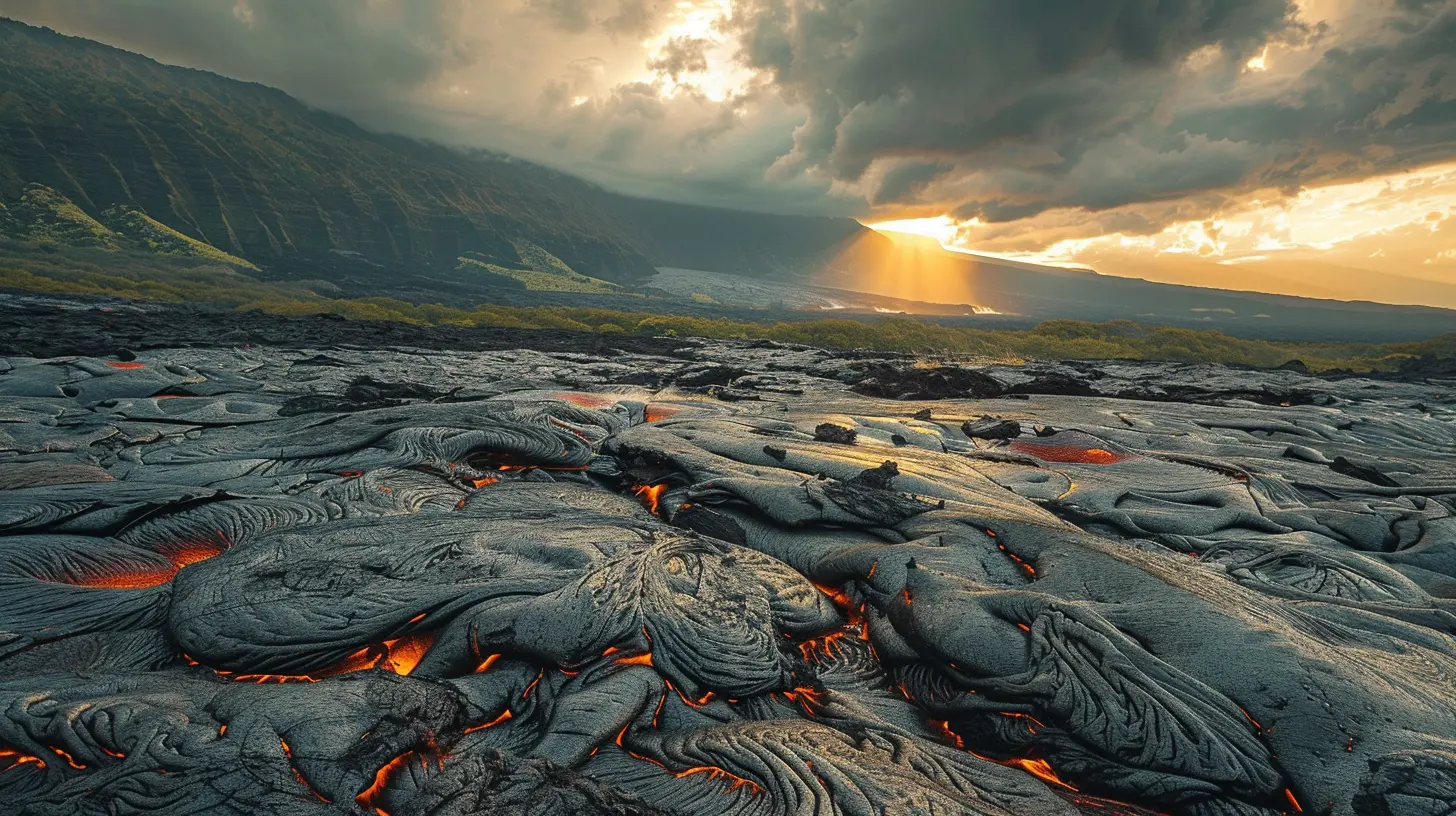
The Different Types of Lava Fields
Not all lava fields are the same. If you take a closer look, you’ll notice two distinct types of lava, each with its own characteristics:Pāhoehoe Lava
Smooth, ropy, and often resembling a frozen river, pāhoehoe lava forms when lava moves slowly and cools gradually. It creates intricate, flowing patterns that give the rock a mesmerizing texture. Walking across a pāhoehoe field is like stepping onto a solidified wave, frozen in time.ʻAʻā Lava
On the other hand, ʻAʻā lava is rough, jagged, and sharp. It forms when lava flows quickly, cooling into broken chunks that make for tough terrain. Imagine walking across a field of broken glass—this is not the kind of landscape you want to explore in flip-flops!Both types of lava dominate the park, creating a dramatic contrast between smooth, flowing formations and harsh, rugged fields.
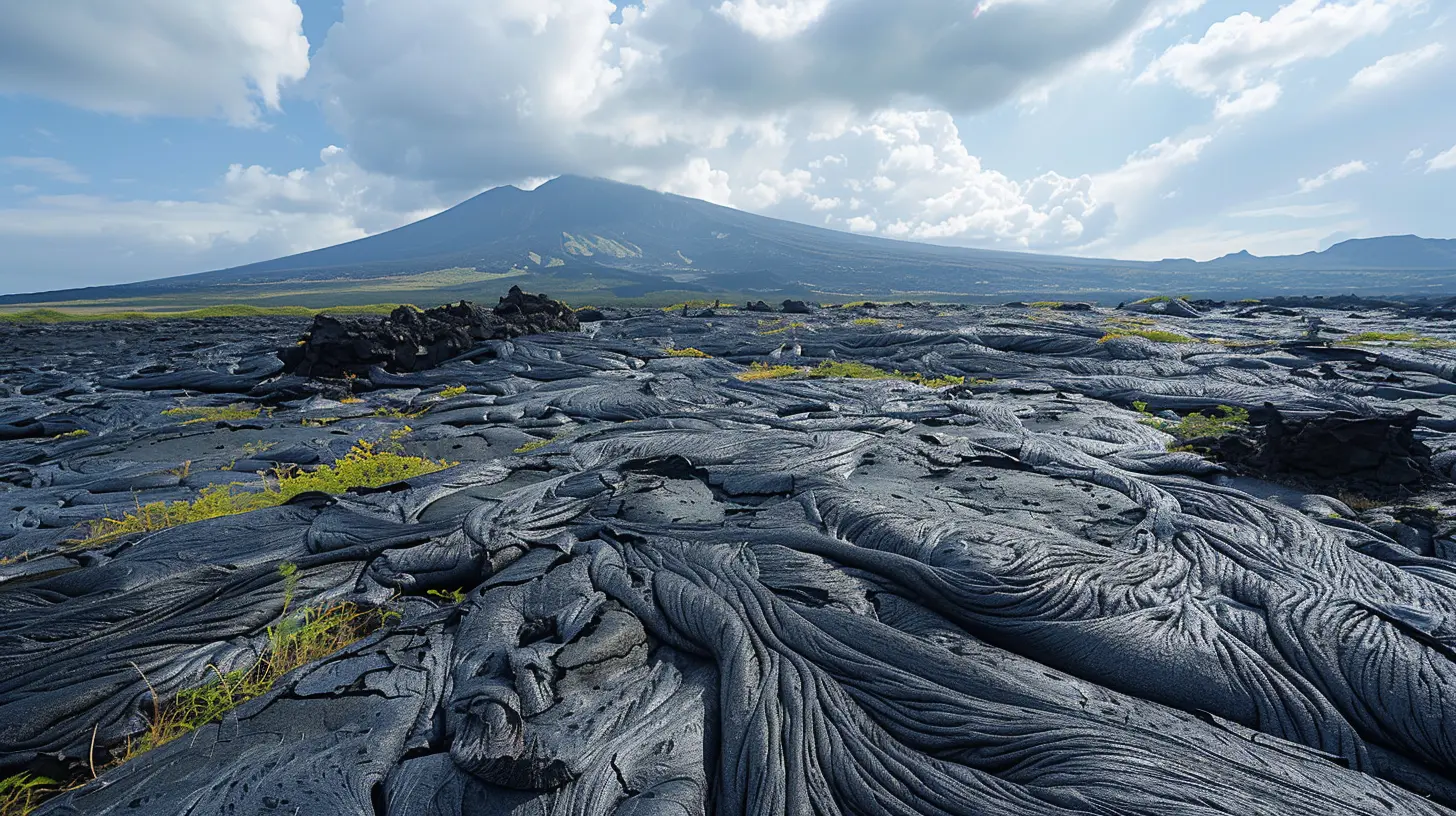
Walking Through a Lava Field
Stepping onto a lava field in Hawai'i Volcanoes National Park is like setting foot on another planet. The ground beneath you is dark, cracked, and sometimes warm to the touch. There’s no vegetation in many areas, just an endless expanse of black rock stretching toward the horizon.If you plan to hike across these fields, you’ll want sturdy shoes, plenty of water, and a sense of adventure. Trails like the Devastation Trail and Kīlauea Iki Trail take you through some of the park’s most famous lava-formed landscapes.
The Chain of Craters Road
One of the best ways to witness the lava fields up close is by driving down the Chain of Craters Road. This road descends from the park’s main entrance toward the coastline, cutting through miles of hardened lava. Along the way, you’ll pass old lava flows that have buried roads, signs, and sometimes even houses—an eerie reminder of the volcano’s unstoppable force.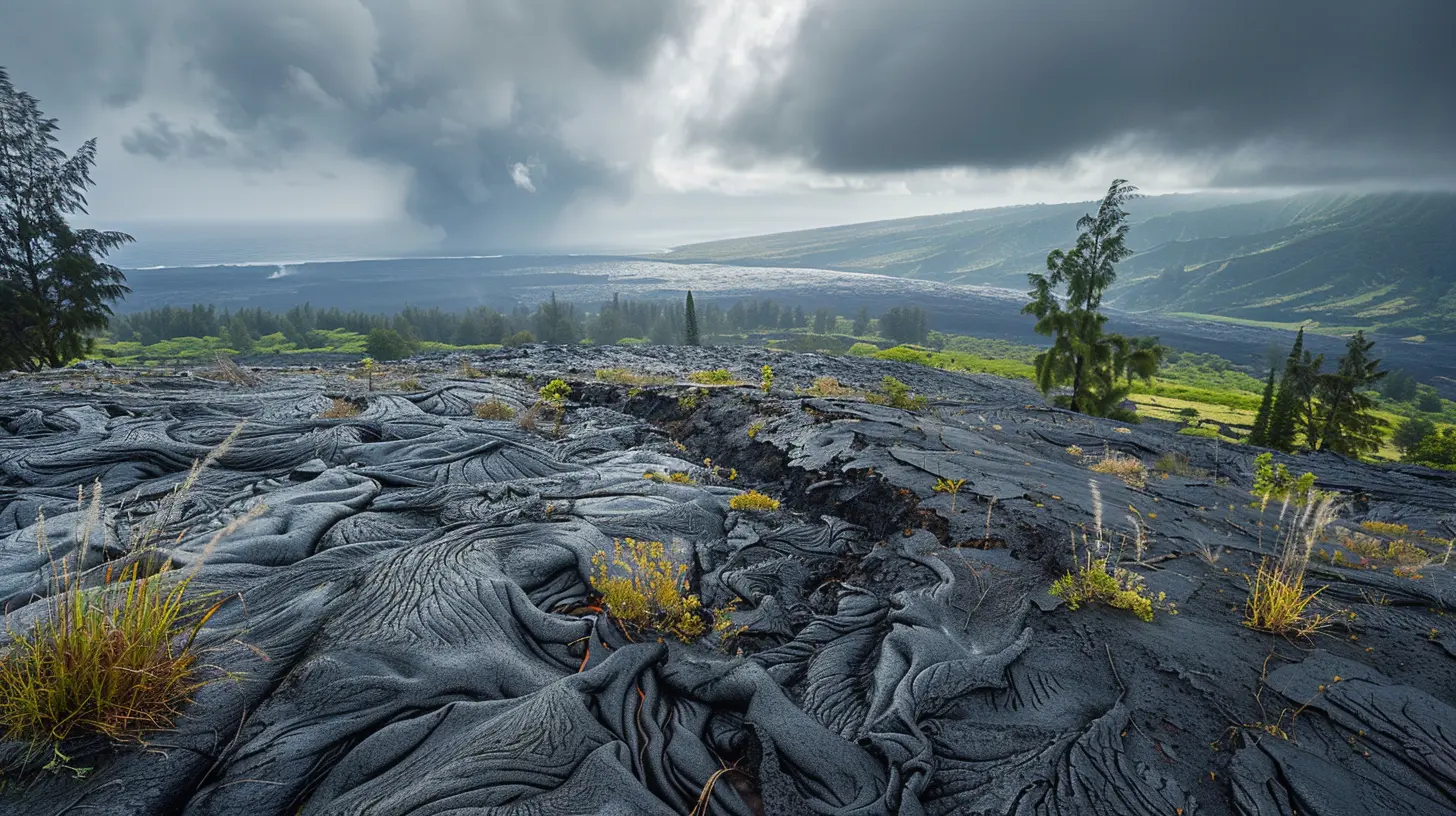
The Power of Recent Eruptions
Though some lava fields date back thousands of years, others are shockingly recent. The 2018 eruption of Kīlauea changed the landscape dramatically, covering entire communities in fresh lava and creating new black-sand beaches. It was a powerful reminder that these volcanic forces are still at work, constantly reshaping the land.After this massive eruption, some areas of the park were closed or altered, and even today, scientists continue to monitor the volcano’s every move.
Life Finds a Way
At first glance, lava fields look barren—lifeless wastelands of rock and ash. But if you take a closer look, you’ll see something amazing: life slowly creeping back in.Hardy plants like ʻŌhiʻa Lehua trees and ferns begin to take root in cracks and crevices, breaking down the lava rock into soil over time. This slow process of ecological succession is how entire forests eventually grow over old lava flows, proving that nature is always in motion, even when it seems like everything has been destroyed.
The Cultural Significance of Lava Fields
For Native Hawaiians, the lava fields of Hawai'i Volcanoes National Park are more than just geological wonders—they are sacred. The land here is deeply connected to Pele, the Hawaiian goddess of fire and volcanoes. Stories and legends tell of her travels across the islands, shaping the land with her fiery temper.Visitors are encouraged to respect the land, not just for its danger but for its cultural significance. Many Hawaiians believe that taking lava rocks as souvenirs brings bad luck—a superstition backed by countless tourists who have reportedly returned their stolen rocks after experiencing misfortune.
Safety Tips for Visiting Lava Fields
Lava fields are breathtaking, but they can also be dangerous if you’re not careful. Here are some key safety tips to keep in mind:- Wear sturdy shoes – The terrain is sharp and uneven. Flip-flops won’t cut it.
- Bring plenty of water – The heat from the sun and the dark lava can make the area feel like an oven.
- Watch your step – Some areas have hidden cracks, and the ground can be unstable, especially near active vents.
- Follow park regulations – Some areas may be closed due to recent lava activity, so respect all signs and warnings.
- Don’t take lava rocks – Seriously, Pele is said to have a way of making sure you regret it.
A Journey Through Time and Fire
The ancient lava fields of Hawai'i Volcanoes National Park tell a story of incredible power, destruction, and renewal. These landscapes are proof that the Earth is alive, constantly changing, and shaping itself in ways both beautiful and terrifying.Walking across these lava fields, you get a profound sense of time—of land being born, of past eruptions that reshaped the world, and of the continuous cycle that still unfolds today. Whether you come for the geology, the history, or the sheer thrill of witnessing a landscape unlike any other, one thing is certain: the lava fields of Hawai'i Volcanoes National Park leave an unforgettable impression.
all images in this post were generated using AI tools
Category:
National ParksAuthor:

Reed McFadden
Discussion
rate this article
3 comments
Kinsley Hodge
Explore the ancient lava fields of Hawaii Volcanoes National Park, where Mother Nature played a game of 'hot potato' with molten rock! Just remember, while the views are stunning, the only thing that should be flowing is your camera battery—leave the lava to the pros!
June 5, 2025 at 3:46 PM

Reed McFadden
Absolutely! The lava fields are a breathtaking sight, but safety first—capture the beauty from a distance and enjoy the wonders of nature!
Ainsley Hurst
This article beautifully captures the breathtaking landscapes of Hawaii Volcanoes National Park. Thank you for sharing such insightful and engaging information!
June 4, 2025 at 2:39 AM

Reed McFadden
Thank you for your kind words! I'm glad you enjoyed the article and the beauty of Hawaii Volcanoes National Park.
Hayden Monroe
Uncover the whispers of ancient fire beneath Hawaii's captivating lava fields. Adventure awaits!
May 25, 2025 at 3:53 AM

Reed McFadden
Thank you! The ancient lava fields truly hold a timeless allure and are a testament to Hawaii's volcanic history. Adventure indeed awaits all who explore them!



